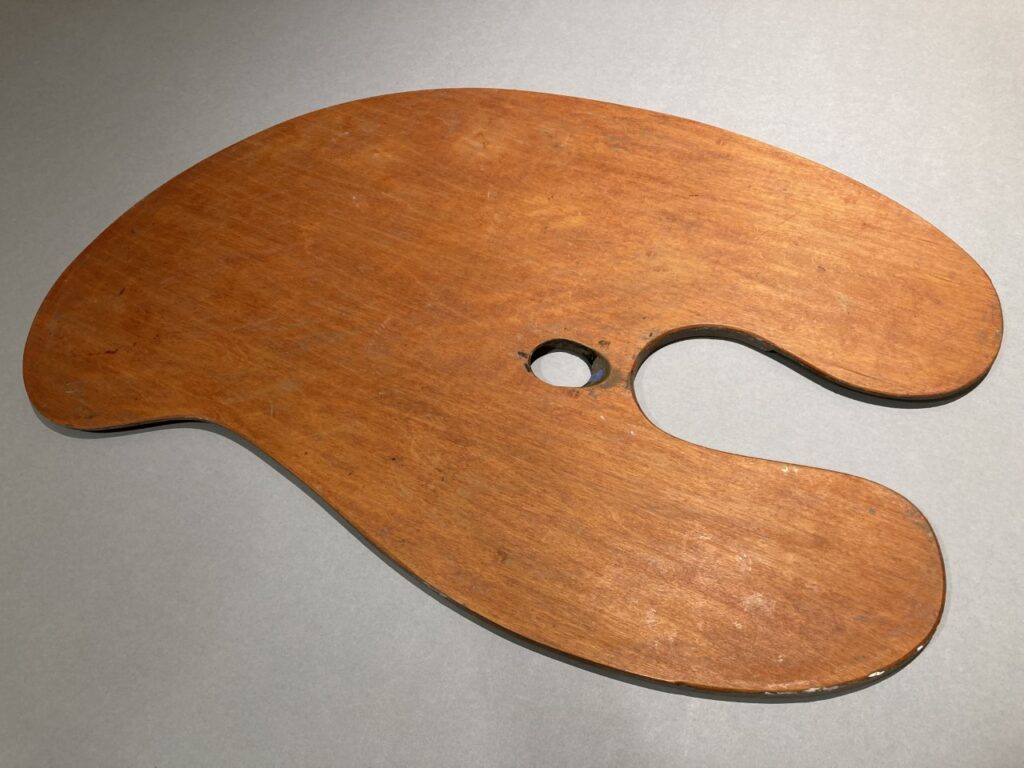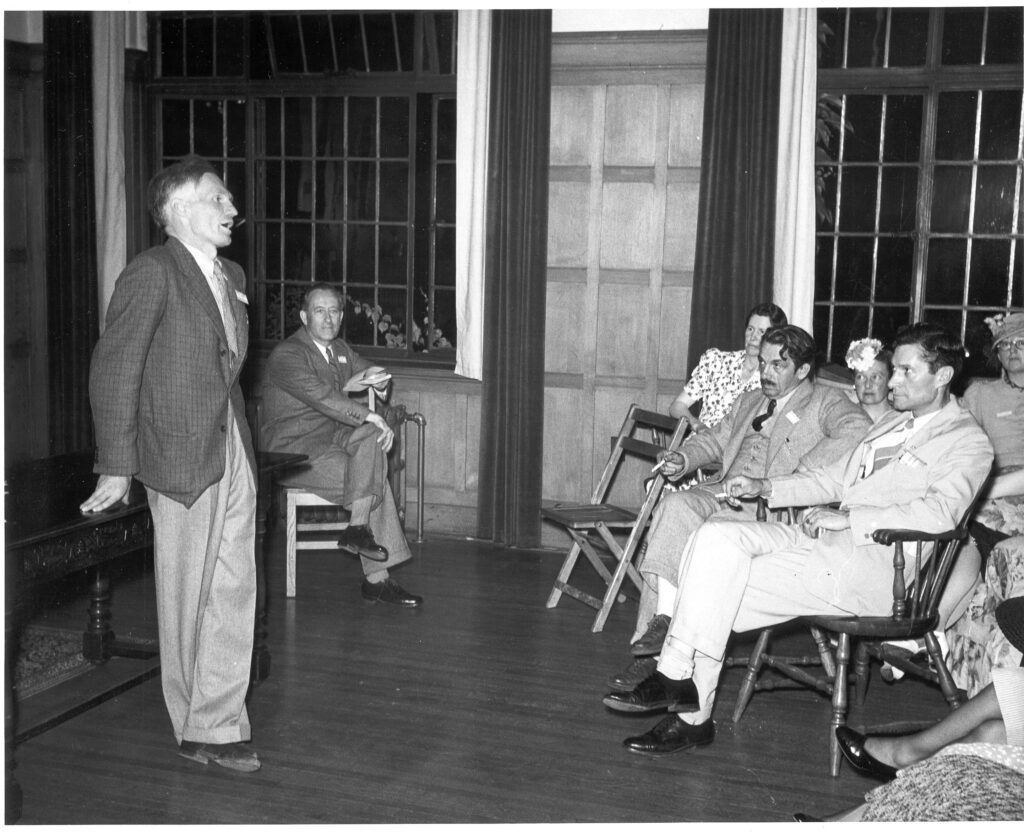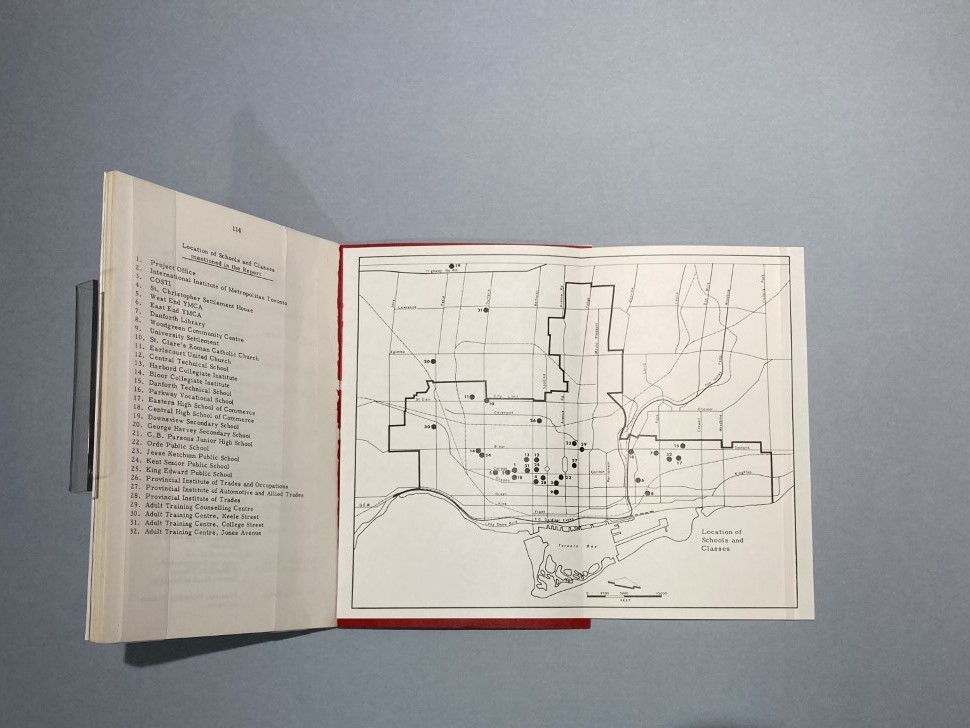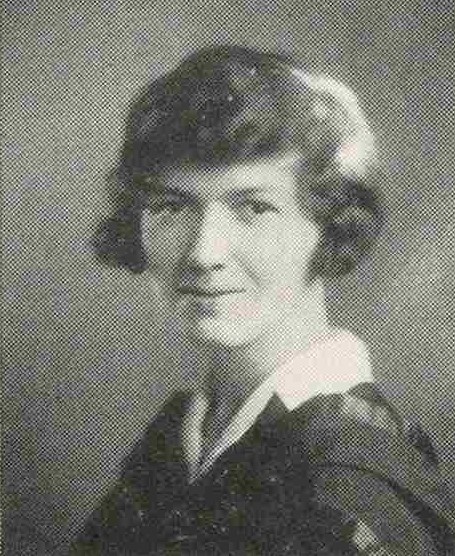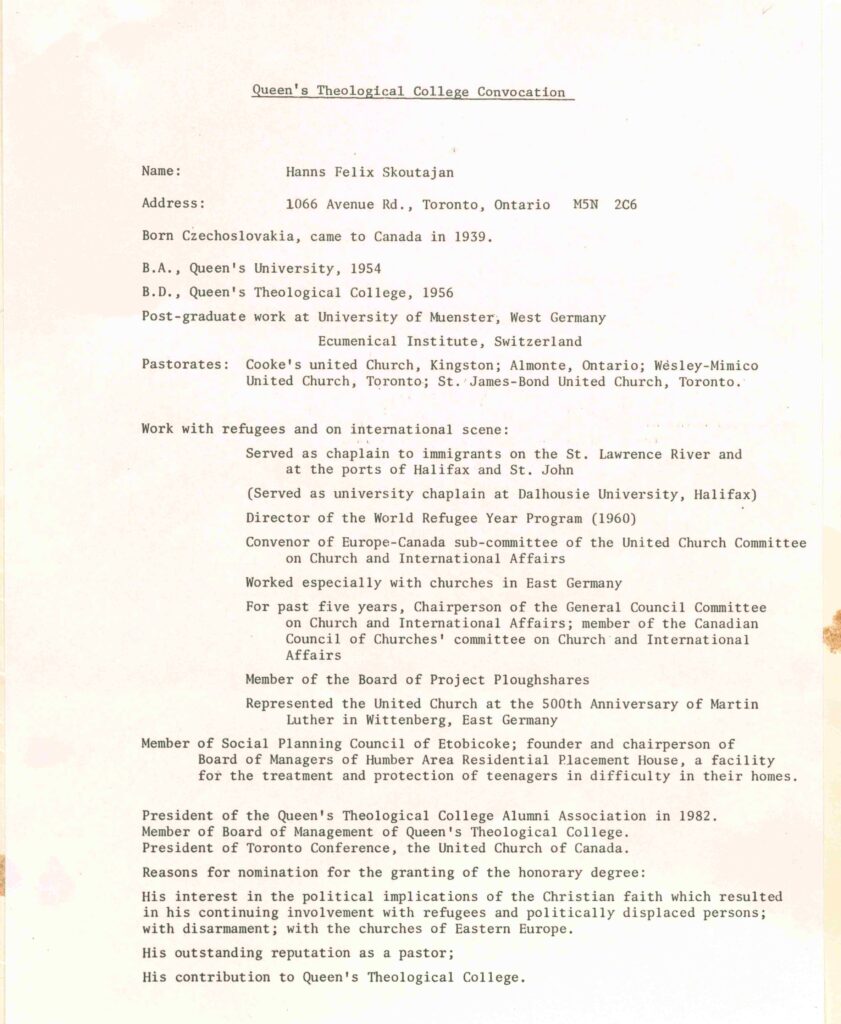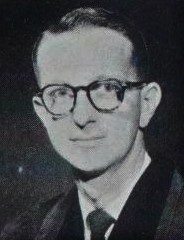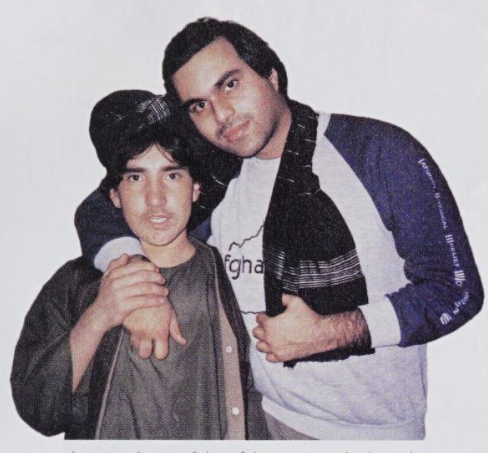The response to refugees varied at Queen’s at different times – silence, ignorance, and even hatred are therefore also a part of this story. However, some examples from the University’s history show activism, creativity, and the meaning of personal experience.
(16) André Charles Biéler (1896-1989)
Picture: André Biéler at the first conference of Canadian artists in Kingston, June 1941, André Biéler paper, 2050-3-63-3, Queen’s University Archives
While not a refugee himself, André Charles Biéler had a significant impact on refugee relief efforts in Kingston, as well as at Queen’s University. Born in Lausanne, Switzerland, his family moved to Montreal when he was 12. After serving in World War One, he studied art in Paris, New York, and Switzerland, and lived in Quebec from 1927 on. In 1936, Biéler became artist-in-residence at Queen’s University and taught as a Professor of Art until his retirement in 1964, at which time he also received an Honorary Degree of Laws from the University. From 1957 to 1963, Biéler was the founding director of the Agnes Etherington Art Centre and the first President of the Federation of Canadian Artists, founded in 1941.
In October of 1940 the Ottawa Branch of the Canadian National Refugee Committee organized an exhibition with an auction to raise money for relief work. A variety of artists donated their artworks, with Biéler contributing an oil painting, “The Sunny Market”, and a pencil drawing, “Étude du nu.” While this exhibition was important for Canadian art in general, it also points to the variety and creativity of relief efforts that the Queen’s community was involved in at this time – ranging from fellowships and accommodation to the “quilts for refugee children” that the Levana Society collected in 1941.The exhibition and auction in 1940 also points to the networks beyond the University and Kingston that Biéler was part of.
Alongside religious and other organizations, the Canadian National Committee on Refugees played an important role in relief efforts. From 1938 to 1948, the committee was chaired by Cairine Wilson who received an Honorary Degree of Laws from Queen’s in 1943. In October 1941, she was in contact with the Dean of Medicine, Frederick Etherington – husband of Agnes Etherington – and advocated for more “refugee medical men” and “foreign physicians.” But Etherington could only report a “hopeless minority” in favour at a vote of the Medical Council of Canada. Local or individual openness toward refugee relief efforts which André Charles Biéler represented, at the same time as general disapproval inspired by prejudice or immigration law, illustrate a simultaneity apparent in other periods and refugee contexts too.
(17) Edith A. Ferguson (1903-1993)
Picture: Edith A. Ferguson in the Tricolor ’30 (Kingston: Alma Mater Society 1930), p. 41, Queen’s University Archives
Edith A. Ferguson was born in 1903 within Glengarry County, Ontario. She always had an interest in other cultures despite or perhaps because of her rural upbringing. She completed her BA at Queen’s in 1931. While she additionally later obtained an MA from Columbia University, this was not until 1949. It is this space in between her two degrees that detail her commitment to refugee support, education, and relief that inspired and gripped her for decades to come.
With the conclusion of the Second World War, Ferguson joined the United Nations Refugee and Relief Administration and travelled to Germany where she worked as a Welfare Officer helping to support refugees and other displaced individuals. These experiences strengthened her interest in refugee and immigrant integration into Canadian society, the field in which she wrote and studied for forty years.
Ferguson conducted several studies on the challenges immigrants faced regarding integration, had her publications used as textbooks in the field, and served on federal task forces studying services to immigrants. From 1951 to 1976 she worked for the Ontario Citizenship Bureau, organizing and conducting intercultural seminars. She was honoured by the Province of Ontario in 1975 along with twenty–four other women for “outstanding contributions they have made over the years to their community or country,” and was inducted into The Order of Canada in 1976 “in recognition for her work in the area of immigration.”
Though Ferguson achieved much and was recognized countlessly by various entities, she represents something else for our showcase, the silence of women from historical record. Though different texts and electronic sources exist that detail her works, the amount of photos that were located of her in our research was close to nil. This is not entirely unexpected though as this uncanny silence is a pattern that plays out in the majority across historical landscapes and in different forms: pictures, words, familial objects – we can both count ourselves lucky and also reflect somberly on Ferguson’s embodiment of existence now mainly in texts.
(18) Hans Skoutajan (1929-2015)
Picture: Hanns Skoutajan in the Tricolor ’56 (Kingston: Alma Mater Society 1956), p. 45, Queen’s University Archives
Hanns Skoutajan was a refugee who came to Canada in April 1939 when he was ten years old from Nazi occupied Aussig (Usti nad Labem), Czechoslovakia. He and his parents had been deprived of their home the previous October with the signing of the Munich Agreement that ceded Sudetenland to Germany to pacify Nazi Germany. His family were known to be socialists and anti-fascists, and managed to flee in time to avoid being arrested. They first went to Britain, but the government did not allow them to stay, so they went to Canada instead. The Skoutajans arrived as “resettlers” in Batawa near Kingston, a village founded by Czech refugee entrepreneur Thomas J. Bata who brought his shoe production and some of his workers to Canada.
Skoutajan attended Queen’s University, completing BA and BD degrees in 1954-6. In the fall of 1957 he was assigned by the United Church of Canada to assist in welcoming and helping immigrants at Pier 21. He helped locate lost baggage, looked after babies, helped with interpretation, and reassured worried immigrants. One of the refugee groups Skoutajan helped during this time were Hungarian refugees from the 1956 Revolution, including the students that came to Queen’s like Thomas Fahidy. He was also involved in organizing relief in the 1980s when refugees from Southeast Asia arrived in Canada. The honorary Doctor of Divinity degree Skoutajan received from Queen’s University in 1986 explicitly mentioned these relief activities. Skoutajan held pastorates at several churches including Cooke’s United Church in Kingston where he continued to work as a social activist and organized community fundraisers for refugee efforts; he was a member of the Council of Canadians, an organization that organizes strategic campaigns to improve social programs in Canada.
Skoutajan wrote a biography called Uprooted and Transplanted, outlining his refugee journey. One of his beliefs was that “endings bring new beginnings” and as such, his support of refugees did not stop upon his death. Skoutajan requested that memorial donations be made to the United Church of Canada’s Emergency Response for Syrian Refugees to keep supporting refugees after his passing.
(19) Mostapha Zahir (born 1964)
Picture: Mostapha Zahir (r) with one of the Afghan patients he brought to Kingston for medical treatment in 1987, Queen’s University Alumni Review 76,1 (2002), p. 9, Queen’s University Archives
Mostapha Zahir was born in Kabul in 1964 as the grandson of former Afghan King, Mohammad Zahir Shah. Zahir Shah was exiled from Afghanistan in 1973 in a palace coup, so Zahir had to leave with him at nine years old. The forced move led to much turmoil in both Afghanistan and Zahir’s life. Zahir later remarked that Afghanistan “has always been poor but was then stable and moving toward democracy when [Zahir Shah] ended the absolute monarchy in 1964”, which would have made Afghanistan a modern democratic state by introducing free elections, women’s rights and universal suffrage. However, this progress came to a halt with the coup. Zahir moved to many different cities (Rome, Vienna, London) before continuing his education at Queen’s University in 1987. He received a Bachelor of Arts Honours from the Department of Political Science in 1993.
In Kingston, Zahir became active as co-founder of the Afghan Medical Relief Organization (AMRO) in the late 1980s; as of 2002, the organization had sent medical supplies and other relief to Afghanistan to a value of $250,000. AMRO also brought 15 wounded, mainly young Afghans to Kingston for medical treatment of wounds from the Soviet-Afghan war. In a 2003 newspaper article, Zahir mentioned that AMRO was “only permitted by the government to bring them in, treat them, and send them back.” Such relief work was only possible with the help of people from Kingston and beyond campus.
Through the experience of being a refugee and observing a lack of progress in his country, Zahir has been a strong advocate for change and sustainability. His success comes from the fact that most people in Afghanistan want to rebuild the country as it was devastated via the Afghanistan war. Before returning to Afghanistan after the fall of the Taliban in the early 2000s, Mustafa served as his grandfather’s diplomatic assistant (1991-2000). In 2000, he became the former King’s chief of staff until he was chosen to be the ambassador to Italy in 2002. He served in that role until becoming the Director General of Afghanistan’s National Environmental Protection Agency in 2005. NEPA serves as Afghanistan’s environmental policy-making and regulatory institution to regulate, monitor and enforce environmental laws. As of the current Taliban takeover of the capital city Kabul, it is unknown whether there will be a federal ministry for the environment; as a result of this uncertainty, many climate officials are in hiding. Zahir’s fate is unknown as of the finalization of this text, but he may have unfortunately become a refugee again.
